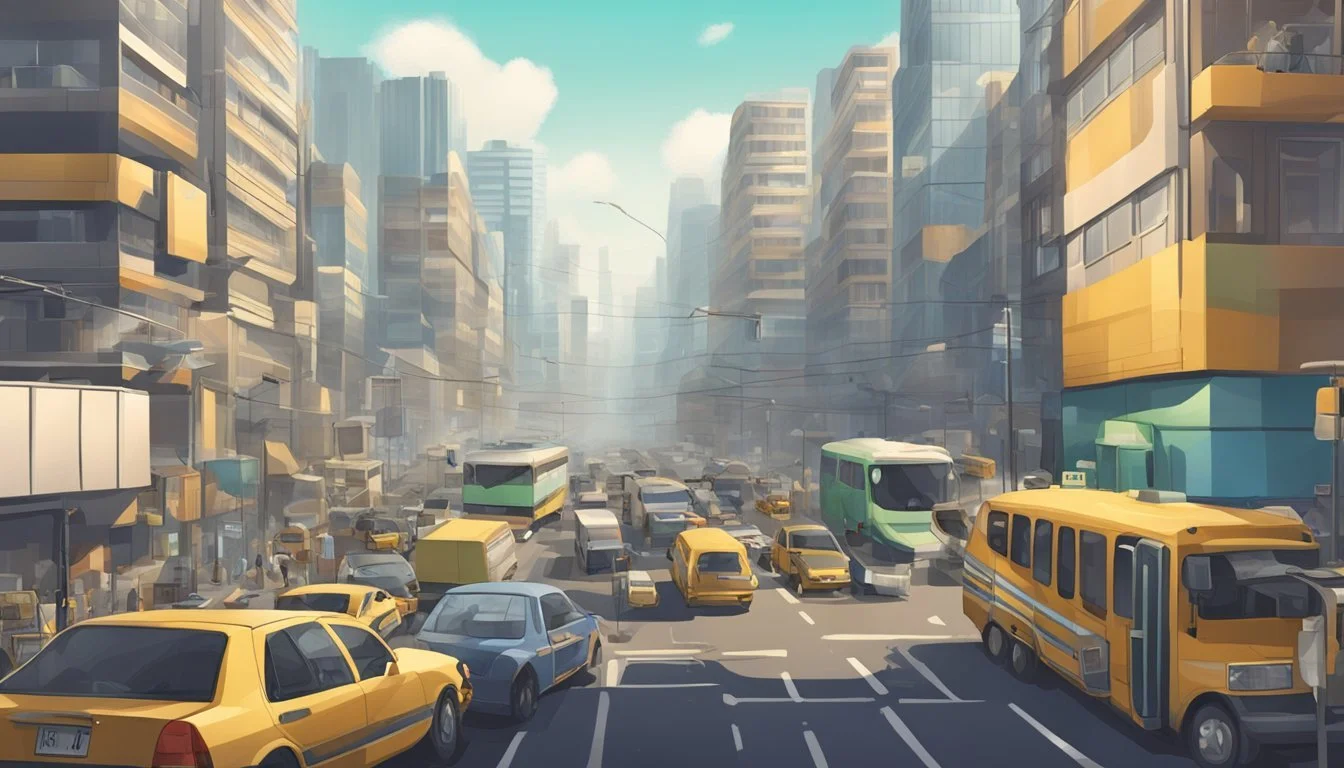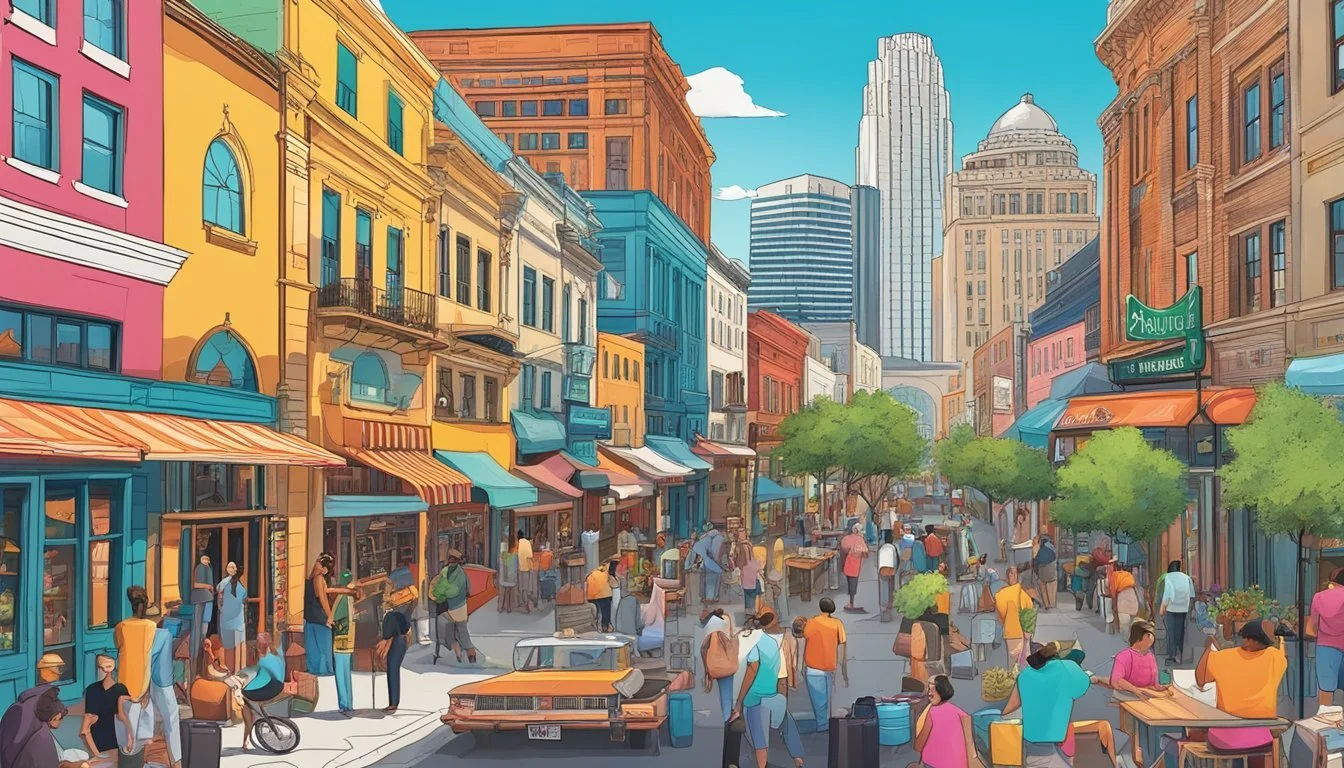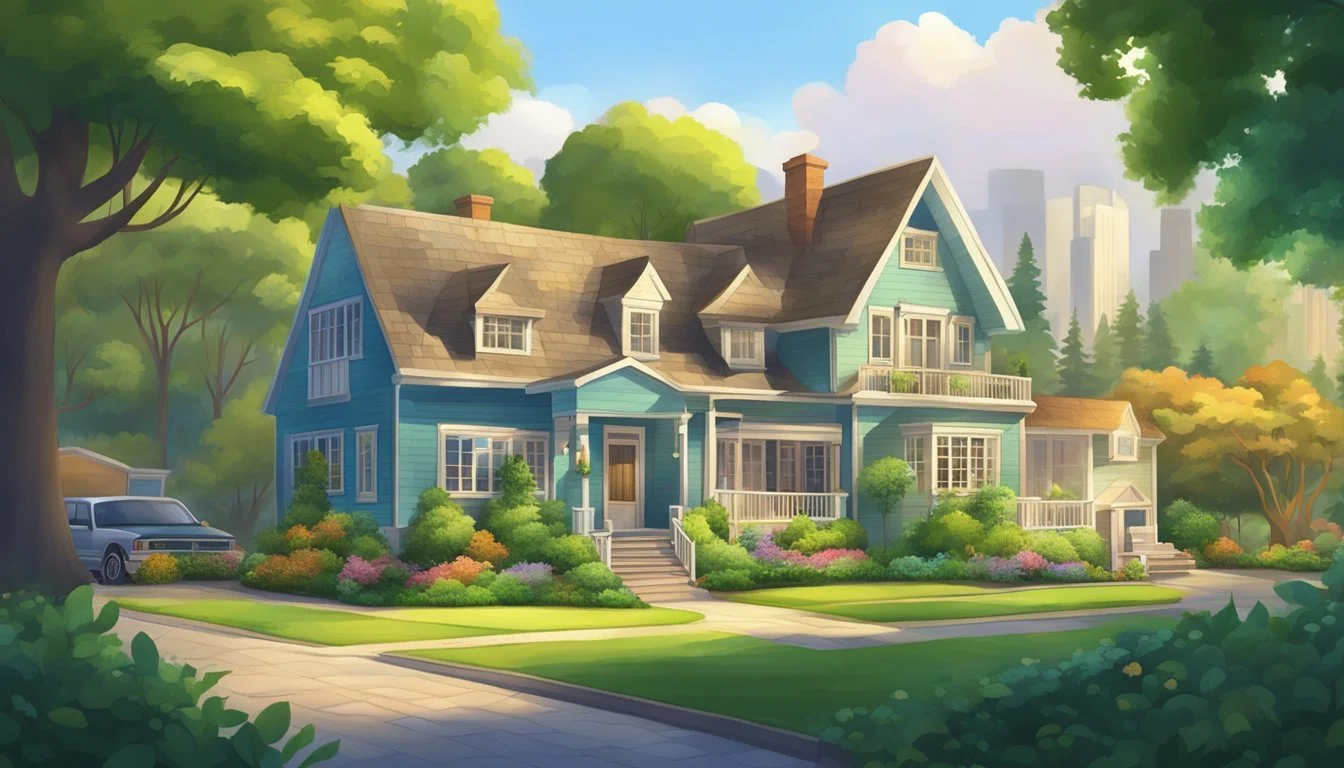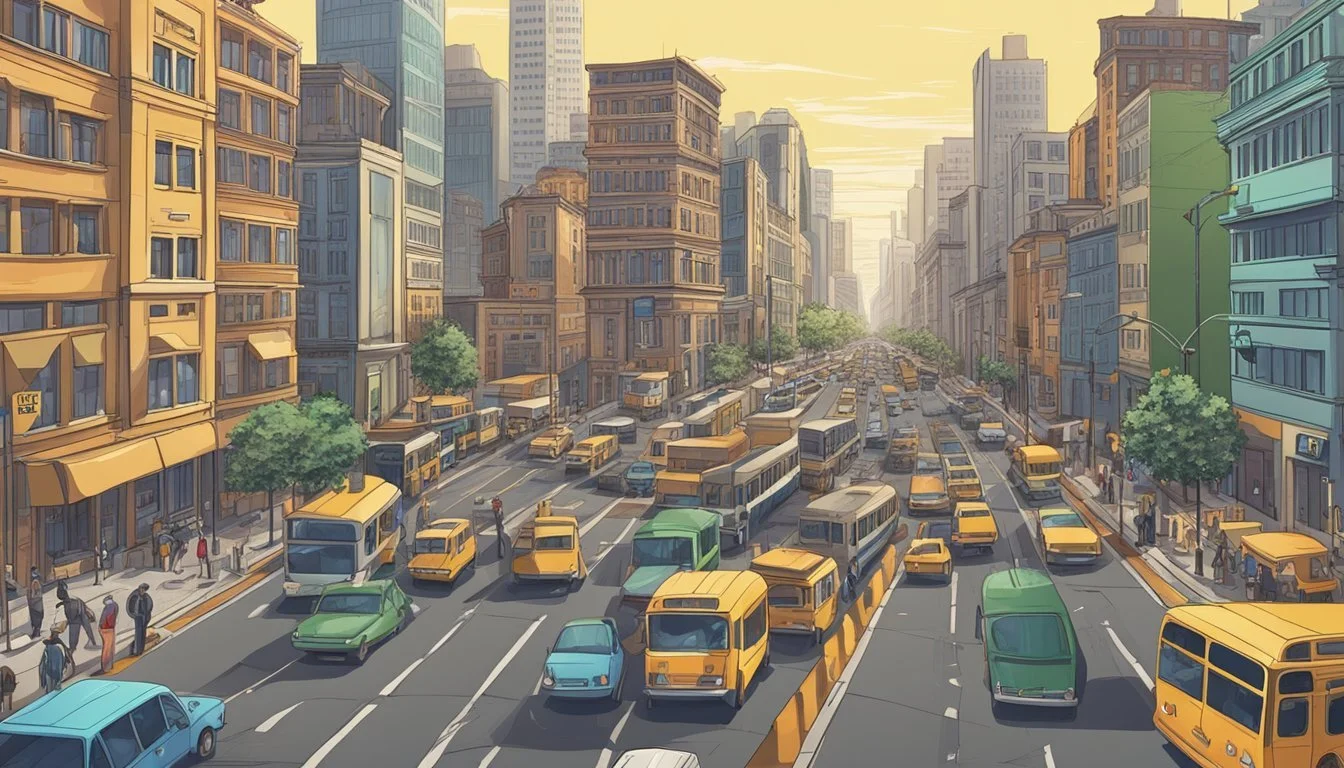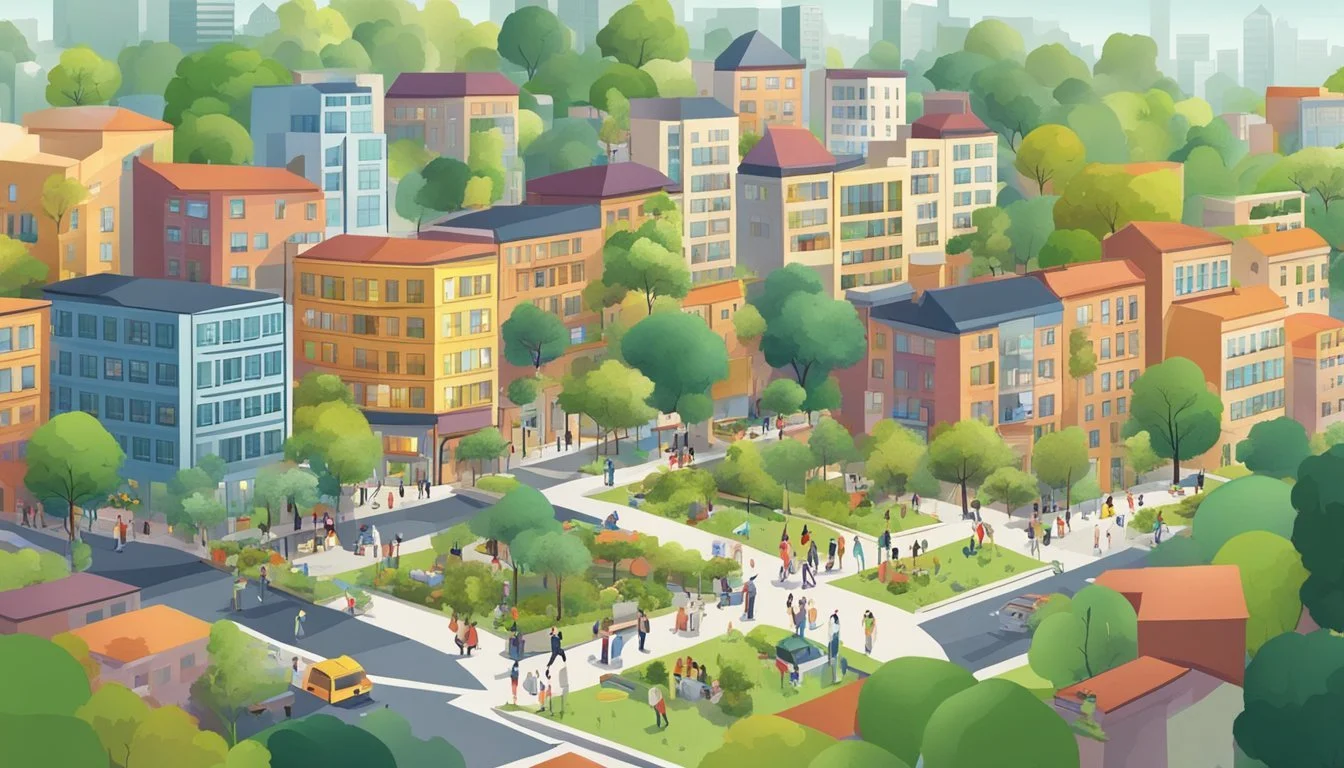Austin Living Experience Reveals City Pros and Cons
Weighing Pros and Cons of Texas Capital
Austin, Texas, often hailed as a vibrant and eclectic city, has garnered attention as a popular destination for residents and visitors alike. Known for its thriving music scene, diverse culinary offerings, and unique cultural atmosphere, Austin has become a magnet for people seeking a dynamic urban experience. While Austin offers numerous advantages, it also presents challenges that potential residents should consider before making it their home.
The city's reputation as the "Live Music Capital of the World" and its abundance of outdoor recreational spaces, such as Barton Springs, contribute to its appeal. Austin's growing job market, particularly in the tech sector, has attracted a significant millennial population. However, the rapid growth has led to increased traffic congestion and rising housing costs, which may impact the quality of life for some residents.
The Allure of Austin
Austin, the capital of Texas, has earned a reputation as a vibrant and dynamic city. Known as the "Live Music Capital of the World," it boasts an unparalleled music scene that attracts both artists and fans alike.
The city's cultural offerings extend beyond music. South by Southwest (SXSW), a renowned annual festival, showcases film, interactive media, and music, drawing creative minds from across the globe.
Austin's tech industry has flourished, earning it the nickname "Silicon Hills." This thriving sector provides ample job opportunities and contributes to the city's economic growth.
Nature enthusiasts find solace in Austin's numerous outdoor activities. From hiking trails to swimming holes, the city offers a perfect blend of urban living and natural beauty.
The food scene in Austin is diverse and innovative. Food trucks, barbecue joints, and upscale restaurants cater to various tastes and preferences.
Austin City Limits Music Festival is another major draw, featuring an impressive lineup of musicians across multiple genres. This event further cements Austin's status as a music lover's paradise.
The city's unique charm, combined with its economic opportunities and cultural offerings, continues to attract newcomers. Austin's blend of southern hospitality and progressive attitudes creates a welcoming atmosphere for residents and visitors alike.
Economic Landscape
Austin's economy has undergone significant changes in recent years. The city has become a major tech hub while grappling with rapid growth and rising costs.
Job Market
Austin's job market remains robust, particularly in the technology sector. The city has earned the nickname "Silicon Hills" due to the influx of tech companies and startups. Major employers include Dell, IBM, Apple, and Google.
Unemployment rates in Austin consistently remain below the national average. The city's diverse economy also offers opportunities in healthcare, education, and government sectors.
However, competition for high-paying tech jobs can be fierce. The influx of skilled workers from other parts of the country has intensified this competition.
Investment and Startups
Austin has become a hotbed for startups and venture capital investment. The city's entrepreneurial ecosystem attracts both established companies and new ventures.
In 2023, Austin-based startups raised over $2 billion in venture capital funding. This trend has continued into 2024, with several notable funding rounds for local companies.
Austin's startup scene benefits from the presence of incubators and accelerators. These organizations provide resources and mentorship to fledgling businesses.
The absence of state income tax in Texas serves as an additional incentive for businesses and entrepreneurs. This tax environment has contributed to Austin's appeal as a destination for startups and established companies alike.
Lifestyle and Culture
Austin's vibrant lifestyle and culture make it a unique place to live. The city offers a diverse mix of experiences, from world-class music and food to outdoor recreation and cultural events.
Cultural Diversity
Austin embraces diversity, attracting people from various backgrounds. The city hosts cultural festivals celebrating different ethnicities throughout the year. East Austin, in particular, showcases a blend of Hispanic and African American influences in its art, food, and community events.
Local museums like the Mexic-Arte Museum and the George Washington Carver Museum highlight the city's multicultural heritage. Austin's welcoming atmosphere has led to the growth of international communities, adding to its cosmopolitan feel.
Food and Dining
Austin's food scene is a major draw for residents and visitors alike. The city is famous for its barbecue, with establishments like Franklin Barbecue drawing long lines of eager patrons.
Food trucks offer diverse cuisines, from Korean fusion to vegan tacos. Austin's restaurant landscape ranges from upscale dining to casual eateries, catering to all tastes and budgets.
The city's commitment to farm-to-table dining is evident in its numerous farmers' markets and locally-sourced menus.
Music and Festivals
Known as the "Live Music Capital of the World," Austin boasts over 250 live music venues. From intimate clubs to large outdoor amphitheaters, music enthusiasts can find performances every night of the week.
Major festivals like Austin City Limits Music Festival and South by Southwest (SXSW) attract global audiences. These events showcase not only music but also film, technology, and interactive media.
The city's music scene spans genres, from country and blues to indie rock and electronic. Iconic venues like the Continental Club and Stubb's BBQ have launched many music careers.
Outdoor and Recreation
Austin's mild climate and natural beauty encourage an active outdoor lifestyle. The city boasts over 300 parks and 30 miles of urban trails.
Barton Springs Pool, a natural spring-fed swimming hole, offers year-round swimming. Lady Bird Lake provides opportunities for kayaking, paddleboarding, and hiking along its shores.
Rock climbing at the Barton Creek Greenbelt and mountain biking in the Hill Country are popular activities. The city's numerous green spaces host outdoor yoga classes, pickup sports games, and community events.
Austin's commitment to outdoor living is reflected in its bike-friendly infrastructure and numerous public spaces for recreation and relaxation.
Housing and Living Costs
Austin's housing market and cost of living have undergone significant changes in recent years. The city's rapid growth has impacted both home prices and everyday expenses for residents.
Housing Market
Austin's housing market has experienced substantial price increases. The median home sale price in Austin reached $536,000 in October 2024, up from $441,250 just a year prior. This sharp rise has made homeownership increasingly challenging for many residents.
Rapid population growth has fueled demand, outpacing available housing supply. New construction struggles to keep up with the influx of newcomers, further driving up prices.
Rental costs have also climbed, with many apartments and homes commanding premium rates. This trend has particularly affected millennials, who make up 31% of Austin's population.
Cost of Living
Beyond housing, Austin's overall cost of living has risen notably. While still lower than some major coastal cities, expenses have increased across various categories.
Groceries, utilities, and transportation costs have all seen upward trends. The average Austin driver spends 66 hours per year stuck in traffic, resulting in $1,270 annually in fuel and lost productivity costs.
Despite rising costs, Austin maintains relatively low taxes compared to other major cities. This factor partially offsets increased living expenses for some residents.
Local businesses and restaurants have also raised prices to keep up with higher operational costs, impacting dining out and entertainment expenses.
Transportation and Infrastructure
Austin faces significant challenges with its transportation system. The city's rapid growth has put strain on roads and public transit options, leading to congestion and mobility issues for residents.
Public Transportation
Austin's public transportation network is limited compared to other major cities. Capital Metro operates bus and light rail services, but coverage and frequency are often inadequate. The MetroRail Red Line runs from downtown to the northern suburbs, providing an alternative for some commuters. However, many areas remain underserved.
Bus routes cover more of the city but can be unreliable during peak hours. Capital Metro is working to expand services through Project Connect, a $11.6 billion plan to improve public transit. This includes new light rail lines, bus rapid transit, and expanded MetroRail service.
Traffic and Commuting
Traffic congestion is a major issue in Austin, especially during rush hours. The city's layout and rapid population growth have led to overcrowded roads and long commute times. Major highways like I-35 and MoPac often experience significant delays.
Many Austinites rely heavily on cars due to limited public transit options. This dependence on personal vehicles contributes to traffic problems and parking shortages in popular areas. The average commute time in Austin is around 27 minutes, but can be much longer for those traveling from suburbs.
The city is working to address these issues through road expansions, improved traffic management systems, and encouraging alternative transportation methods like cycling and carpooling. However, progress has been slow in keeping pace with Austin's rapid growth.
Climate Considerations
Austin's climate presents unique challenges and benefits for residents. The city experiences long, hot summers and mild winters, with occasional extreme weather events.
Weather Patterns
Austin has a humid subtropical climate. Summers are hot, with average high temperatures reaching 97°F (36°C) in August. Winters are mild, with average lows of 42°F (6°C) in January. The city receives about 35 inches of rain annually, mostly in spring and fall.
Severe weather can occur. Thunderstorms are common in spring, sometimes bringing hail or tornadoes. Flash flooding is a risk due to heavy rainfall and the area's geography.
Climate change is impacting Austin. The number of 100°F+ days has increased over recent decades. Droughts have become more frequent and intense.
Coping with Heat
Austin residents must adapt to the hot climate. Air conditioning is essential in homes and businesses. Many public spaces offer cooling centers during extreme heat events.
Outdoor activities are best planned for early morning or evening hours in summer. Staying hydrated is crucial. The city has numerous public pools and swimming holes for relief from the heat.
Energy bills can be high due to air conditioning use. However, Austin's municipal utility offers programs to improve home energy efficiency and reduce costs.
Heat-related illnesses are a concern. The city provides education on recognizing and preventing heat exhaustion and heatstroke. Vulnerable populations, such as the elderly, require extra care during heatwaves.
Pros and Cons of Settling in Austin
Austin offers a vibrant lifestyle with warm weather and a thriving music scene, but faces challenges like traffic congestion and rising costs. The city's rapid growth brings both opportunities and growing pains for residents.
Advantages of Austin Living
Austin boasts a warm climate with mild winters, appealing to those who enjoy outdoor activities year-round. The city's dedication to green spaces provides ample recreational opportunities, with Barton Springs serving as a local favorite.
Austin's robust job market attracts millennials and professionals, particularly in tech industries. The city's famous live music scene contributes to a lively cultural atmosphere, with numerous venues and events.
As the "greenest city in Texas," Austin demonstrates a commitment to environmental initiatives. This focus on sustainability appeals to eco-conscious residents and businesses alike.
Challenges of Austin Living
Traffic congestion ranks as a significant drawback for Austin residents. Commuters spend an average of 66 hours per year stuck in traffic, resulting in lost productivity and increased fuel costs.
The city's rapid growth has led to rising housing costs. While the real estate market remains strong, affordability has become a concern for many residents and potential newcomers.
Austin's popularity has contributed to overcrowding in some areas, particularly during peak tourist seasons and major events. This influx can strain local resources and infrastructure.
Despite its progressive reputation, Austin still faces challenges in terms of diversity and inclusion. Some residents argue that the city's rapid development has led to gentrification and displacement of long-time communities.
Educational Environment
Austin boasts a robust educational landscape with prestigious universities and diverse learning opportunities. The city's academic atmosphere fosters intellectual growth and career development for students of all ages.
University Presence
Austin is home to the University of Texas at Austin, a top-tier public research institution. This flagship campus attracts students from across the globe, contributing to the city's vibrant college town atmosphere. UT Austin offers world-class programs in fields like engineering, business, and liberal arts.
Other notable institutions include St. Edward's University, a private liberal arts college, and Austin Community College, which provides affordable education and workforce training. These schools create a dynamic academic environment and contribute to the city's skilled workforce.
Educational Opportunities
Austin's commitment to education extends beyond higher learning. The city boasts strong public and private K-12 schools, with many achieving high rankings statewide. The Austin Independent School District serves over 80,000 students and offers specialized programs in areas like fine arts and STEM.
Adult learners benefit from numerous continuing education options. Coding bootcamps, language schools, and professional development courses cater to those seeking to enhance their skills or change careers. Austin's tech-driven economy also promotes partnerships between businesses and educational institutions, creating internship and apprenticeship opportunities for students.

